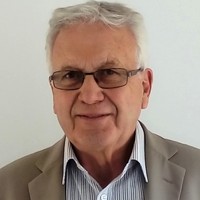
Roger Forshaw
I am an honorary lecturer at the KNH Centre for Biomedical Egyptology, the University of Manchester in biological anthropology and Egyptology. My research areas include dental studies and healing practices in ancient Egypt, the Saite Period and the role of the lector in ancient Egyptian society.
A former dental surgeon, I qualified at Leeds University in 1972 and then entered general practice. I later went on to study Egyptology at Exeter University and then at the University of Manchester where I obtained an MSc in Biomedical Egyptology and a PhD in Egyptology - my thesis was: The Role of the Lector in Ancient Egyptian Society, a title now published.
My research interests in Egyptology include:
Healing practices in ancient Egypt
Medicine and dentistry in ancient cultures
The medical papyri
The role of the lector
Saite Period
Nubian studies
Palaeopathology of the skull, particularly relating to teeth
Scientific investigations of mummies
Address: KNH Centre for Biomedical Egyptology
The University of Manchester
Stopford Building
Oxford Road
Manchester M13 9PT
A former dental surgeon, I qualified at Leeds University in 1972 and then entered general practice. I later went on to study Egyptology at Exeter University and then at the University of Manchester where I obtained an MSc in Biomedical Egyptology and a PhD in Egyptology - my thesis was: The Role of the Lector in Ancient Egyptian Society, a title now published.
My research interests in Egyptology include:
Healing practices in ancient Egypt
Medicine and dentistry in ancient cultures
The medical papyri
The role of the lector
Saite Period
Nubian studies
Palaeopathology of the skull, particularly relating to teeth
Scientific investigations of mummies
Address: KNH Centre for Biomedical Egyptology
The University of Manchester
Stopford Building
Oxford Road
Manchester M13 9PT
less
Related Authors
Colin Robinson
University of Leeds
James Marrow
University of Oxford
W. Clem Karl
Boston University
Angel Fuentes
Universidad Autónoma de Madrid
Maria Nilsson
Lund University
Ellen Morris
Barnard College
Jean-Jacques Hublin
Max Planck Institute for Evolutionary Anthropology
Viktória Kiss
Hungarian Academy of Sciences
Ivan Ladynin
Moscow State University
Gary Feinman
Field Museum
InterestsView All (15)
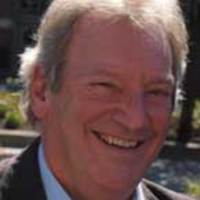
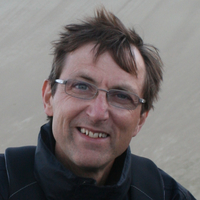
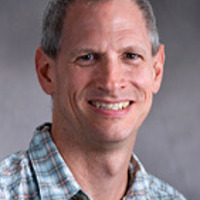


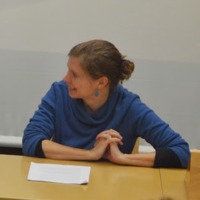
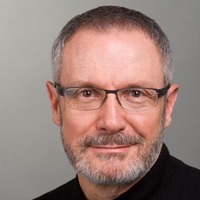
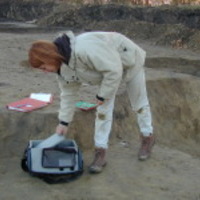
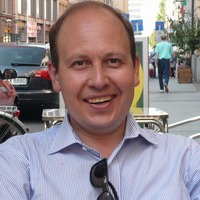

Uploads
Books by Roger Forshaw
As well as geographical, environmental and dietary factors, which undoubtedly affected general health, some groups were prone to specific hazards. These are discussed in detail, including soldiers’ experience of trauma, wounds and exposure to epidemics; and conditions - blindness, sand pneumoconiosis, trauma and limb amputations – resulting from working conditions at building and other sites.
Methods of diagnosis and treatment were derived from special concepts about disease and medical ethics. These are explored, as well as the individual contributions and professional interactions of various groups of healers and carers. Medical training and practice occurred in various locations, including temples and battlefields; these are described, as well as the treatments and equipment that were available.
Ancient writers generally praised the Egyptian healers’ knowledge, expertise, and professional relationship with their patients. A brief comparison is drawn between this approach and those prevailing elsewhere in Mesopotamia, Greece and Rome. Finally, Egypt’s legacy, transmitted through Greek, Roman and Arabic sources, is confirmed as the source of some principles and practices still found in modern ‘Western’ medicine.
Combining information from the latest studies on human remains and the authors’ biomedical research, this book brings the subject up to date, enabling a wide readership to access often scattered information in a fascinating synthesis.
Papers by Roger Forshaw
Case 25 relates to the treatment of a dislocated mandible (jaw-bone), a therapy which demonstrates a logical approach taken by the operator to the condition, and differs little from that in use today. Today mandibular dislocation is an infrequent event perhaps representing 3% of all reported dislocated joints in the body. So why should such a comparatively rare minor condition be included among more significant injuries such as compound fractures, stab wounds and serious head lesions which comprise this papyrus.
The suggestion is that this complaint may have been more commonplace in ancient Egypt, and a possible explanation for this could relate to the nature of the diet that the ancient Egyptians consumed. This consisted of a coarse fibrous diet made even more abrasive by the introduction of inorganic particles such as sand which was blown in from the desert. Such a diet caused excessive wear of the teeth and resulted in the loss of numbers of teeth due to subsequent infection. The additional wear now ensuing on the remaining teeth would cause a reduction in their height, changes in chewing habit and eventually alteration to the mechanical function of the mandibular joint. As a consequence, recurrent dislocations of the joint in ancient Egypt may not have been that uncommon requiring specialised knowledge in its corrective reduction.
The lector, is consistently depicted carrying an open or rolled-up papyrus, an indication of his literacy and his role in ritual practices. The lector was a prominent officiant in the various ceremonies of the funeral procession from leaving the home of the deceased to the final interment in the tomb. He was a symbolic representative of Thoth, and his important delivery of the transfigurations transformed the deceased into an Akh, a “transfigured being”.
Craftsmen who built the Old Kingdom tombs sometimes carried the additional title of lector and not only used their trade skills to build the tomb but were also involved in ritual activities. The lector displayed authority and may well have directed and guided ritual proceedings, but first and foremost he was literate and a specialist in ritual practices.
As well as geographical, environmental and dietary factors, which undoubtedly affected general health, some groups were prone to specific hazards. These are discussed in detail, including soldiers’ experience of trauma, wounds and exposure to epidemics; and conditions - blindness, sand pneumoconiosis, trauma and limb amputations – resulting from working conditions at building and other sites.
Methods of diagnosis and treatment were derived from special concepts about disease and medical ethics. These are explored, as well as the individual contributions and professional interactions of various groups of healers and carers. Medical training and practice occurred in various locations, including temples and battlefields; these are described, as well as the treatments and equipment that were available.
Ancient writers generally praised the Egyptian healers’ knowledge, expertise, and professional relationship with their patients. A brief comparison is drawn between this approach and those prevailing elsewhere in Mesopotamia, Greece and Rome. Finally, Egypt’s legacy, transmitted through Greek, Roman and Arabic sources, is confirmed as the source of some principles and practices still found in modern ‘Western’ medicine.
Combining information from the latest studies on human remains and the authors’ biomedical research, this book brings the subject up to date, enabling a wide readership to access often scattered information in a fascinating synthesis.
Case 25 relates to the treatment of a dislocated mandible (jaw-bone), a therapy which demonstrates a logical approach taken by the operator to the condition, and differs little from that in use today. Today mandibular dislocation is an infrequent event perhaps representing 3% of all reported dislocated joints in the body. So why should such a comparatively rare minor condition be included among more significant injuries such as compound fractures, stab wounds and serious head lesions which comprise this papyrus.
The suggestion is that this complaint may have been more commonplace in ancient Egypt, and a possible explanation for this could relate to the nature of the diet that the ancient Egyptians consumed. This consisted of a coarse fibrous diet made even more abrasive by the introduction of inorganic particles such as sand which was blown in from the desert. Such a diet caused excessive wear of the teeth and resulted in the loss of numbers of teeth due to subsequent infection. The additional wear now ensuing on the remaining teeth would cause a reduction in their height, changes in chewing habit and eventually alteration to the mechanical function of the mandibular joint. As a consequence, recurrent dislocations of the joint in ancient Egypt may not have been that uncommon requiring specialised knowledge in its corrective reduction.
The lector, is consistently depicted carrying an open or rolled-up papyrus, an indication of his literacy and his role in ritual practices. The lector was a prominent officiant in the various ceremonies of the funeral procession from leaving the home of the deceased to the final interment in the tomb. He was a symbolic representative of Thoth, and his important delivery of the transfigurations transformed the deceased into an Akh, a “transfigured being”.
Craftsmen who built the Old Kingdom tombs sometimes carried the additional title of lector and not only used their trade skills to build the tomb but were also involved in ritual activities. The lector displayed authority and may well have directed and guided ritual proceedings, but first and foremost he was literate and a specialist in ritual practices.
Healthcare developed at an early period in ancient Egyptian history as is supported by the evidence from the skeletal and mummified remains; from the artistic sources such as tomb paintings, reliefs and sculptures, as well as from inscriptional and written sources. The medical papyri, in particular, provide details of medical procedures undertaken, drugs employed and treatments provided, some of which have influenced modern medical practice.
What we know about Hesyre comes from his impressive tomb at Saqqara, the walls of which were brightly decorated with items of daily life such as tools, furniture and board games. Additionally, the tomb contained six wooden panels listing Hesyre’s titles at different times in his life, among them those relating to his practice of medicine and dentistry. These panels, which are located in the Egyptian Museum in Cairo, are exquisitely carved and are considered to be among the finest wooden artefacts to survive from antiquity.
""
"
Diet plays a prominent role in the organisation and evolution of human cultures and an increasingly diverse array of analytical techniques are available to help reconstruct diet in ancient populations. Dental palaeopathology is particularly important as it can provide direct evidence of the type of diet an individual consumed during life. Heavy occlusal tooth wear is the most frequent condition recognisable and an examination of both macro and microscopic patterns of wear can establish the differences between the hard fibrous diet typical of a hunter-gatherer, and a diet primarily consisting of softer plant foods consumed by an agriculturist. The distributions of trace elements and stable isotopes in food webs make it possible to use them as natural tracers of foodstuffs. The ratios of the different stable isotopes of carbon and nitrogen can determine, through a consideration of photosynthetic pathways, which specific groups of plants and animals were dominant in the food chains of various populations - a fact that has been used to trace the spread of agriculture in ancient civilisations.
"
Many of the amulets used in healing practices were natural products such as the hair of a donkey or the thread of a piece of fabric twisted into a knot. However, there are a few others which can be classed as jewellery and this presentation explores the use of these.
Was there a specialist in amulets, someone who could advise on their use and best practice? There is attested a sau which can be translated as a magician, but has also been recognised as an ‘amulet man’. What was his role? Where there other individuals in ancient Egypt involved with this practice?